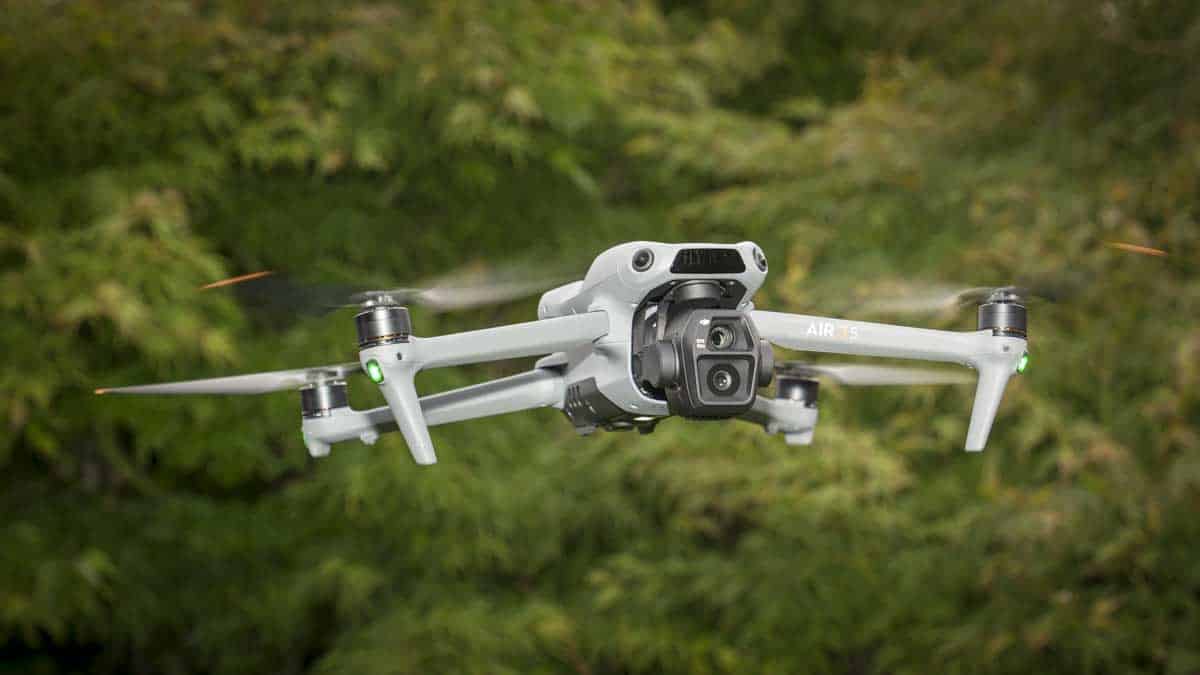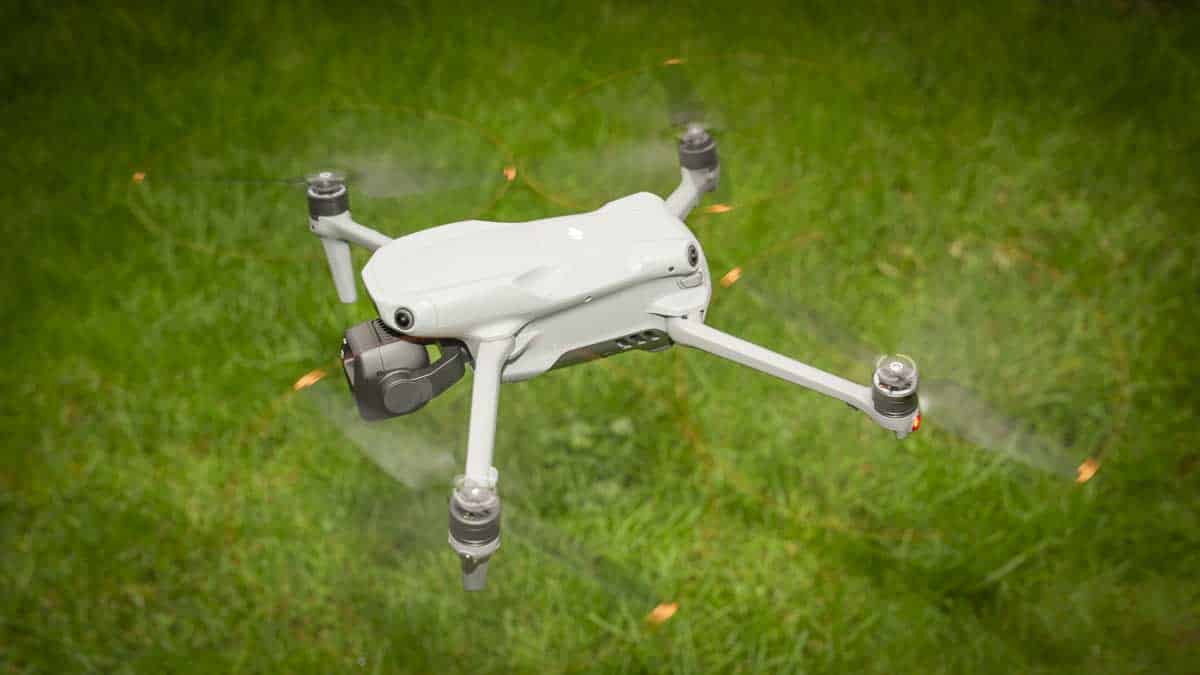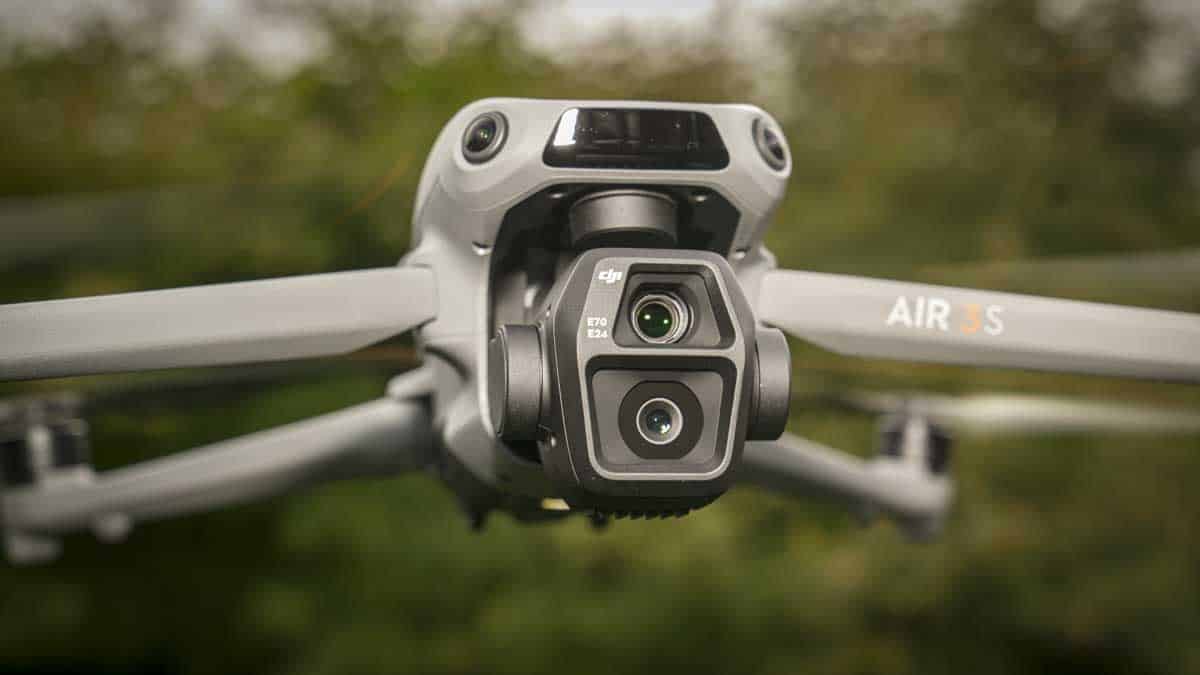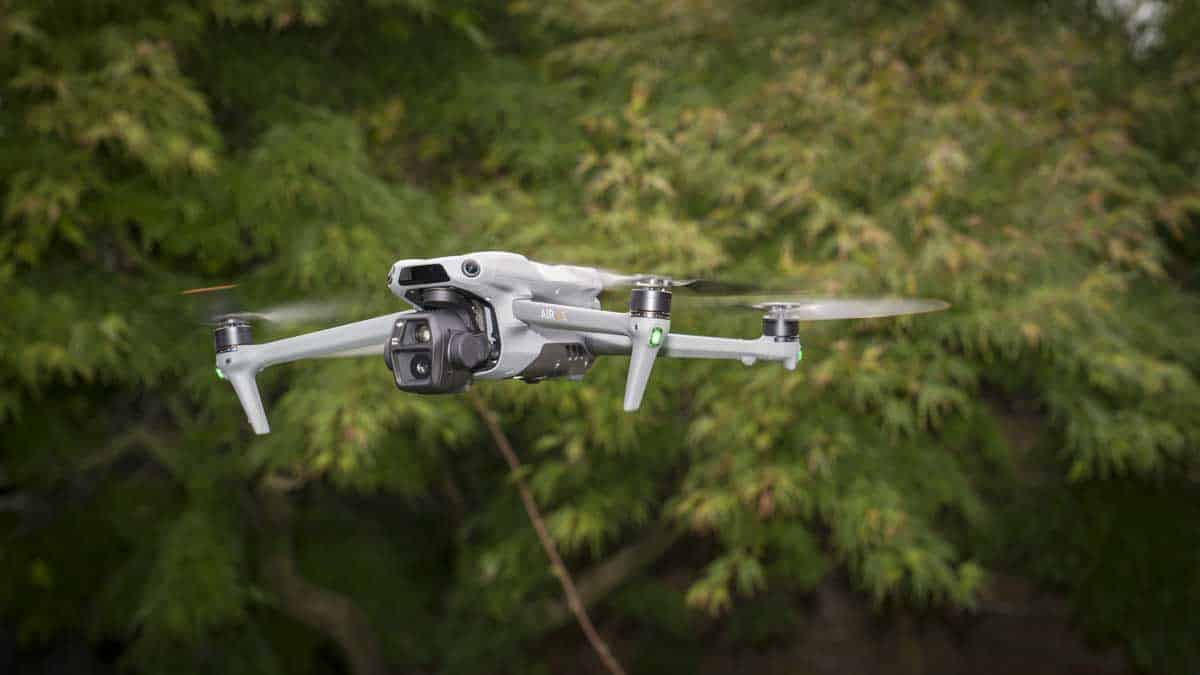As the latest drone from DJI, the Air 3S introduces several major upgrades compared to the Air 3, much like the transition from the Air 2 to the Air 2S. However, while the camera system has received a significant overhaul, the rest of the drone features only minor refinements, justifying the incremental “S” update rather than a complete leap to a DJI Air 4. Once again, this drone has been designed with both photography and video enthusiasts in mind, combining professional-grade features in a familiar compact and lightweight body. At just 724g, the Air 3S remains highly portable and comes with its own carry case. Its size ensures that, along with the controller, it fits easily into a typical camera bag without much effort.
The DJI Air 3S brings several key improvements over the Air 3, most notably in the dual-camera system. While the Air 3 also featured a dual-camera setup, the Air 3S’s system has been significantly enhanced. The new primary camera now sports a 1-inch CMOS sensor, upgraded from the Air 3’s 1/1.3-inch sensor, delivering 50MP resolution, up from 48MP. Alongside this is the 70mm medium tele camera, which retains the 48MP resolution. Both cameras are capable of shooting 4K/60fps HDR video, representing a slight but important improvement over the Air 3’s capabilities. The new setup also offers up to 14 stops of dynamic range, ensuring more detailed shadow and highlight capture.
As well as the camera upgrades, the Air 3S does, of course, include a few other unique new features. One of the most notable is the nightscape omnidirectional obstacle sensing system, which integrates forward-facing LiDAR technology and a suite of sensors around the drone to ensure smooth and safe flights, even in low-light conditions.
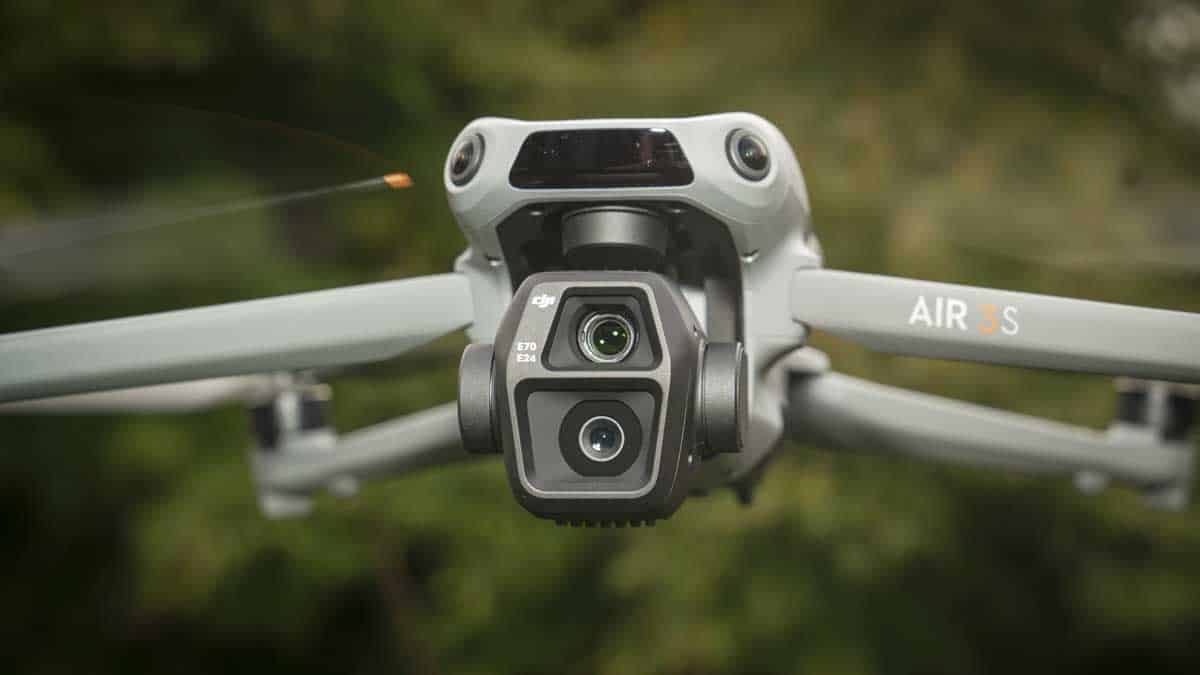
Complementing the low-light object avoidance is the boost in the ISO performance, which now supports a maximum ISO of 12,800, doubling the Air 3’s capabilities. A nice feature is that both cameras offer 10-bit video and support HLG and D-Log M color modes, ensuring flexibility during post-production, especially in low-light conditions, and helping to boost color accuracy and detail.
As with the Air 3, the Air 3S again features the power accumulation charging hub. This charging dock can be used as standard to charge the drone’s batteries through a USB Type-C connection to AC power or a power station, or used to intelligently transfer remaining power from partially depleted batteries into one fully charged battery.
In terms of flight time, the Air 3S offers a maximum flight time of 45 minutes, just under the 46-minute claim of the Air 3. However, this is no doubt in part due to the upgraded video transmission capabilities. The Air 3S supports DJI’s O4 video transmission technology, delivering 1080p/60fps video over distances of up to 20km—an upgrade from the Air 3’s transmission system, and this is really noticeable when using the DJI RC 2 with the integrated screen.
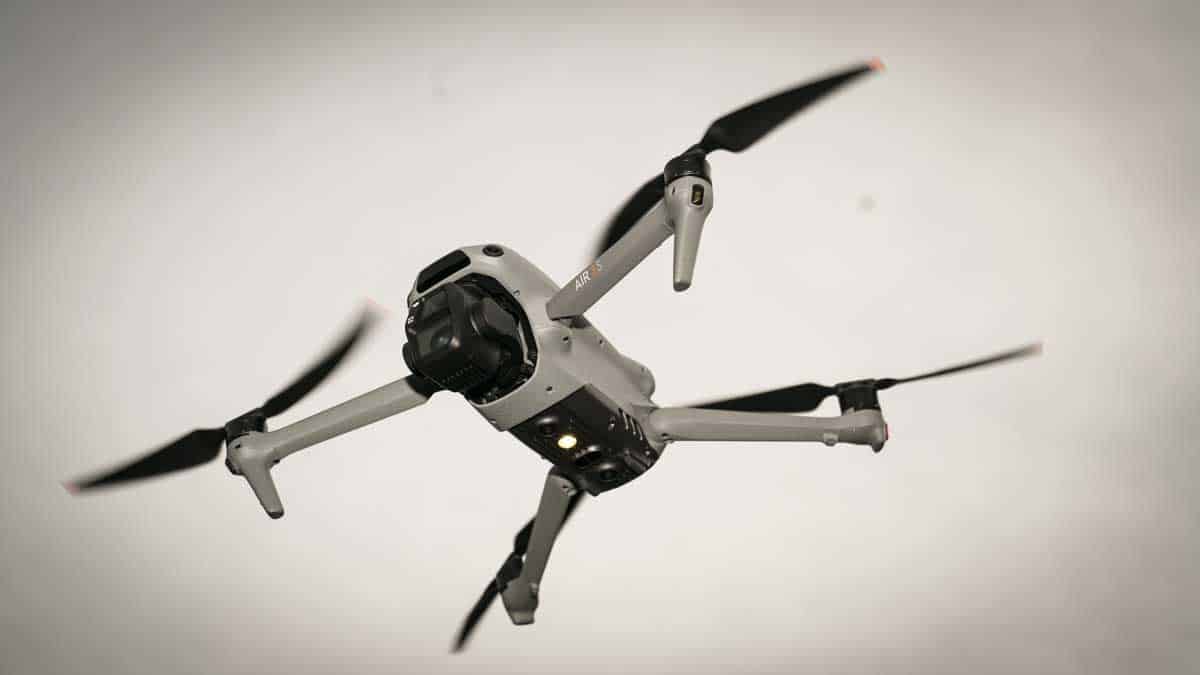
Going back to just a few of the reasons why this drone will appeal to photographers and videographers, the Air 3S introduces tools like Free Panorama mode and Subject Focusing, making it easier to capture panoramic images and maintain sharp focus on subjects. While the Air 3S isn’t a huge upgrade from the Air 3, its upgraded camera now all but makes the DJI Mavic 3 Pro redundant, especially considering the price difference.

